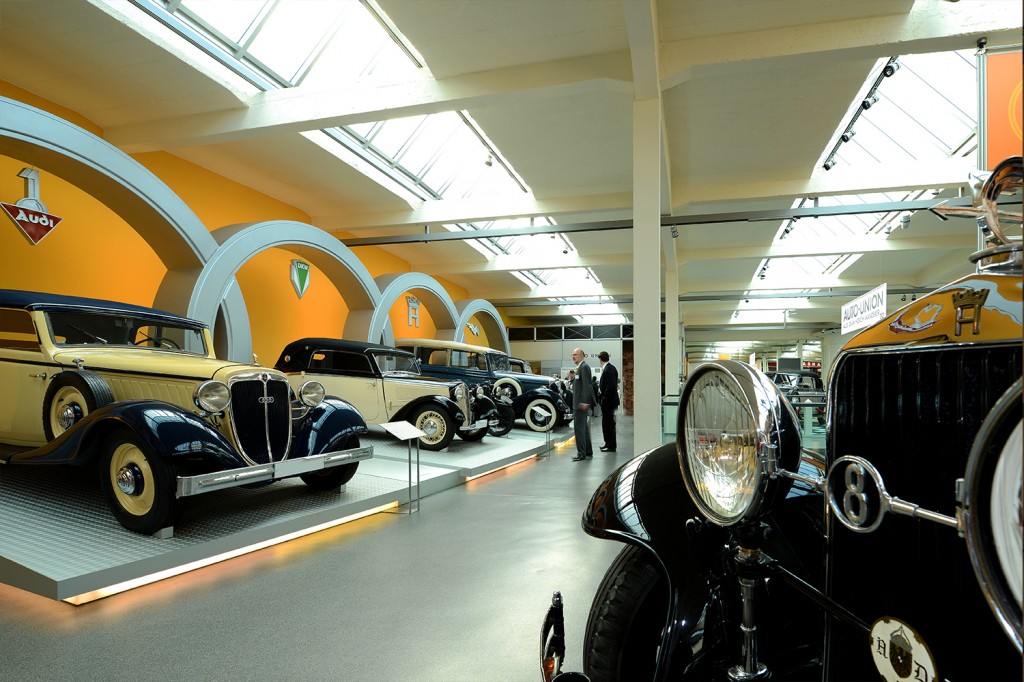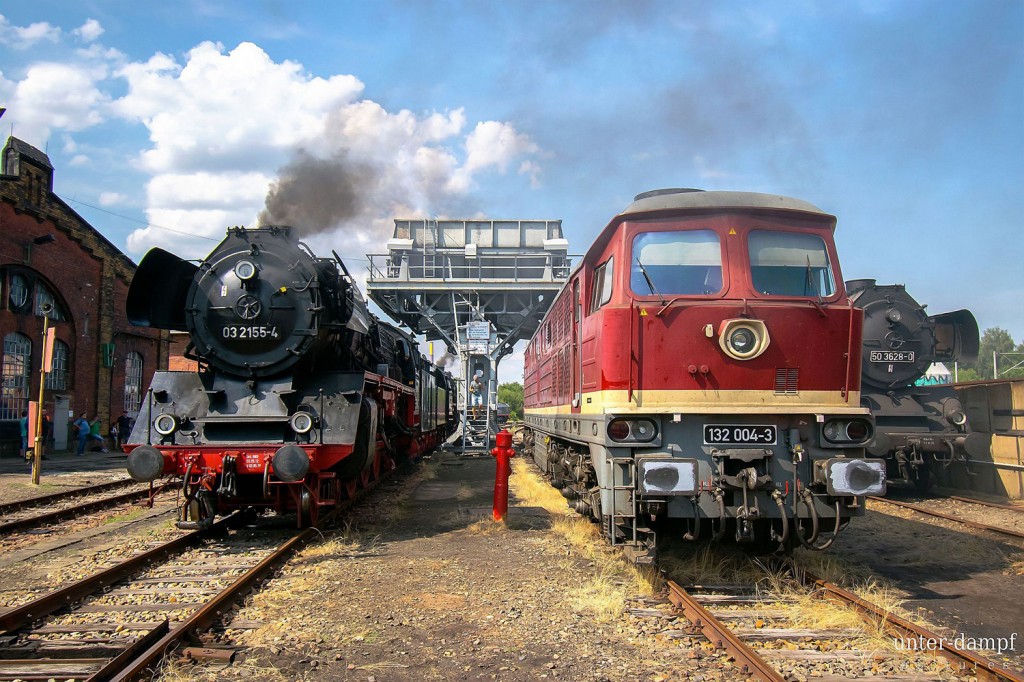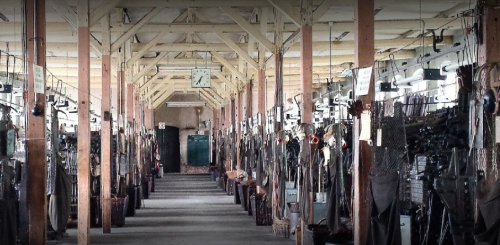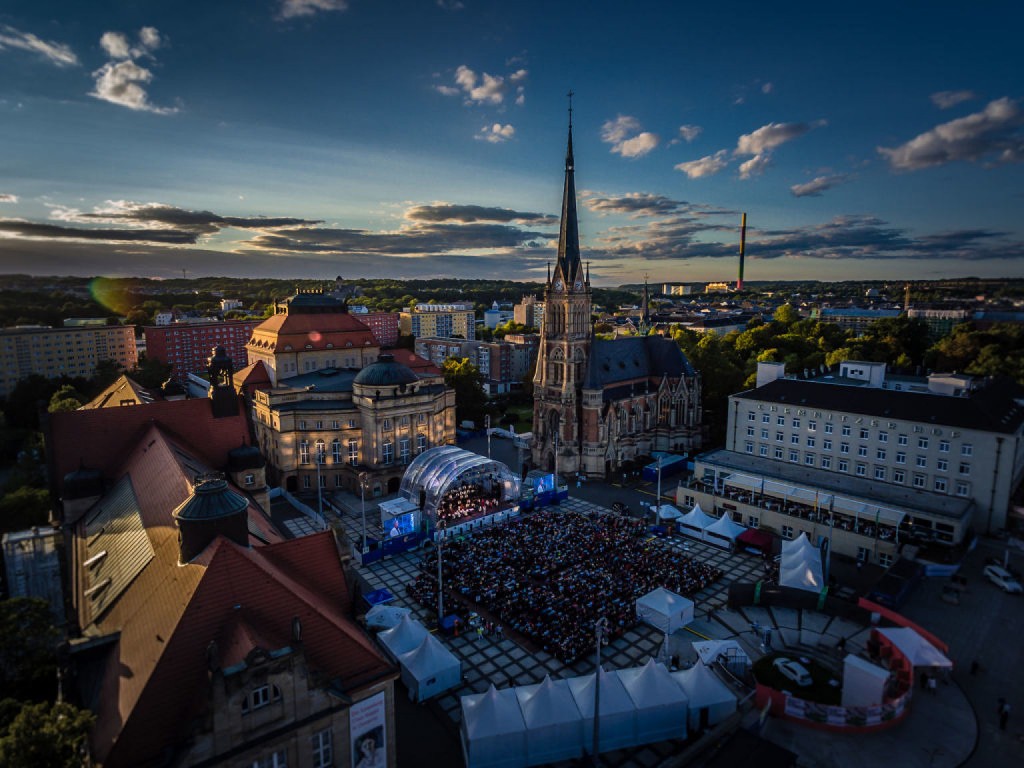
Theater Square in historic Chemnitz, Saxony (Photo Chemnitz Agency for the Promotion of Trade and Industry and Economic Development)
By Ron Bernthal
The southwestern region of Saxony was one of the first and most important centers of early European industrialization. For visitors to Germany’s Saxony region these days, its self-image still rests on the terrain’s natural beauty, the state’s cultural wealth, and a still broad and vital industrial base. It is the success of these attributes and Saxony’s entrepreneurialism that has allowed this German state to build its extraordinary musical, artistic and architectural culture today.
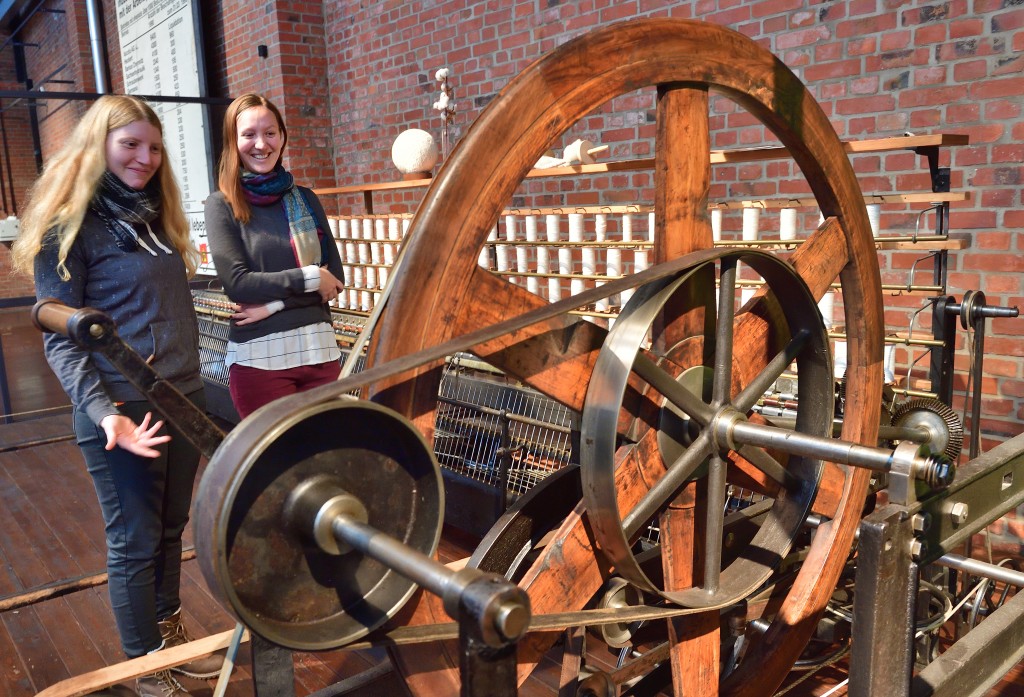
Machinery from the 19th century can be viewed at the Sachsisches Industry Museum in Chemnitz (Photo Wolfgang Schmidt)
From July 11, 2020, the Audi Building in Zwickau will host the central exhibition of the Fourth Saxon State Exhibition called “Boom” – with five other cities in the region hosting additional, but just as important, parts of the “Boom” exhibitions. In addition to the AutoBoom at the August Horch Museum in Zwickau, there is the MachineBoom exhibit at the Chemnitz Industrial Museum; the RailwayBoom in the Chemnitz-Hilbersdorf Railway (outdoors); the CoalBoom in the Mining Museum in the Ore Mountains; the TextileBoom in the Cloth Factory at the Gebr. Pfau in Grimmitschau; and the SilverBoom in the Research and Teaching Mine in Freiberg.
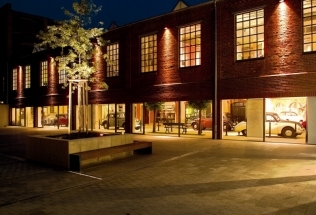
The August Horch Museum, night view. The August Horch Museum Zwickau is an automobile museum which opened in 2004. (Photo August Horch Museum)
The AutoBoom is located in the August Horch Museum in Zwickau, which is next to the central exhibition in the Audi Building. The Horch Museum is where the first models from major global automotive brands, including Horch and Audi, rolled off the assembly line and later was the birthplace of the legendary Trabant automobile during the Cold War-era German Democratic Republic August Horch was the founder of the company that would become Audi.
MachineBoom is located in the Chemnitz Industrial Museum where machines have been designed and produced for more than 200 years, from the filigree clockwork at Glashütte to the high-tech machine center.
RailwayBoom is on the site of the Schauplatz Eisenbahn (Railway Museum) Chemnitz-Hilbersdorf, where you can see the industrial juxtaposition of people, raw materials and products in an open-air museum, located near the historic steam and diesel locomotives in the sooty atmosphere of a roundhouse.
The CoalBoom exhibit is shown in the Mining Museum in Oelsnitz / Erzgebirge, or within the Ore Mountains where the coal industry, which was fundamental for the economic development of south-west Saxony, started. The Ore Mountains, in Central Europe, have formed a natural border between Saxony and Bohemia for around 800 years, from the 12th to the 20th centuries. Today, the border between Germany and the Czech Republic runs just north of the main crest of the mountain range. The highest peaks are the Keilberg, which rises to 4,081-feet, and the Fichtelberg, at 3,986-feet.
The area played an important role in contributing Bronze Age ore, and as the setting of the earliest stages of the transformation of mining and metallurgy from a craft to a large-scale industry, a process that preceded and enabled the later Industrial Revolution. In 2019 the Erzgebirge/Krušnohoří Mining Region became a UNESCO World Heritage site.
TextileBoom is located in the originally preserved cloth factory called ‘Tuchfabrik Gebr. Pfau’ that was built in 1885. The mills remained in family ownership until 1972 when they were incorporated into VEB Volltuchwerke Crimmitschau. In 1990, the whole site of the Tuchfabrik Gebr. Pfau cloth mill was declared a national heritage site. Its size and the original historic buildings and machinery make it a unique attraction in Central Europe.
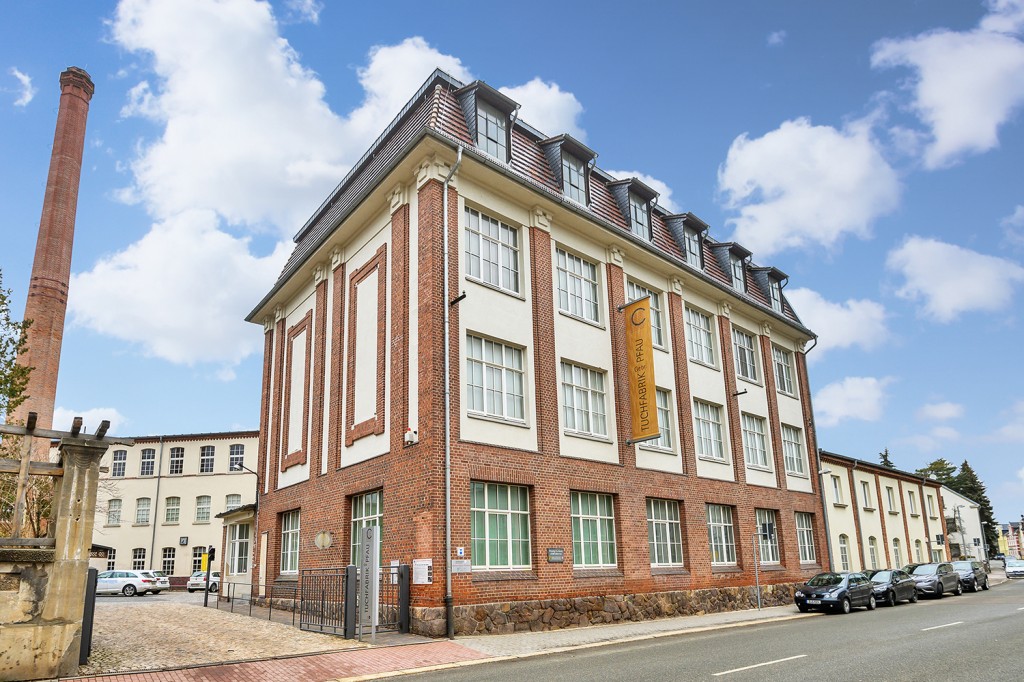
TextileBoom artifacts are reflected in the historic Tuchfabrik Gebr. Pfau (factory mill) in Crimmitschau (Photo Kristin Schmidt)
Visitors can follow the production line of woollen cloth step by step on guided tours, beginning with the raw wool to the readily packed rolls of fabric. The machines are demonstrated by former employees of the regional textile industry. This way, visitors can gain an insight not only into technical history but also into the work and life of the textile workers. Tuchfabrik Gebr. Pfau, in Crimmitschau, along with its 100 year-old machines and looms, are presented in a factory that has not changed since very much since the late 1800′s.
SilverBoom is located in the research and teaching at the Silver Mine Freiberg and provides deep insights into the history of ore mining and shows what role current scientific research plays in resource technologies. With 800 years of mining tradition, 1000 ore veins and active mining, the visitor´s mine of Freiberg is part of the resarch and teaching mine of the Technical University of Freiberg and one of the most important mines in Saxony. The deposits of Freiberg where the basis for the development of the Mining and Metallurgical Industry in the ore mountains.
The “Underground Freiberg“ spreads over an area of 30 square-kilometers underneath the city, where more than 5,000 tons of pure silver where unearthed and made Freiberg Germany’s “silver city.”
In addition to these six geographic locations, the central exhibition in the Audi Building presents Saxony’s 500-year industrial “booms” in six time periods. It tells the eventful history of an early industrialized region with historical documents, objects, technical devices, photographs and through films and valuable works of art and spectacular media installations.
The first period of the five hundred years of industrial culture was the Silver Rush (1470-1813) when the discovery of silver in the Ore Mountains set off a clamor, not only for silver but also for tin and copper. It was an unprecedented boom and attracted people from all over Europe. Augustus the Strong used this incredible wealth to build up the coffers of his state, buying art and collecting treasures from around the world to build Dresden into one of Europe’s glittering capitals of art and architecture.
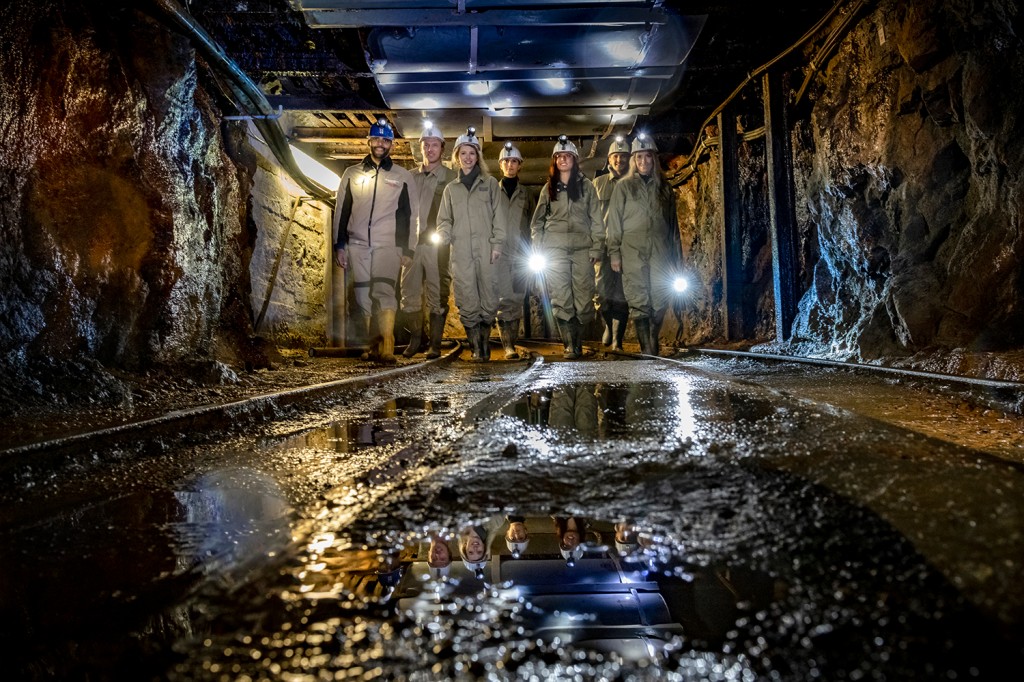
Visiting one of the silver mines at Silberbergwerk Freiberg (Photo Detlev Muelle Müller / TU Bergakademie)
The second period from 1763 to 1914 saw the emergence of the textile industry and mechanical engineering which drove development in Saxony and around the world. In 1914 Saxony was the most industrialized state in the entire German Reich. During this era, there was a third period from 1831 to 1914 with apid development in technology, science and machines. The fourth period from the eve of WWI to the end of WWII is marked by groundbreaking inventions and unprecedented, industrially shaped and organized violence.
The fifth period from 1945 to 1995 includes the industrial culture of East Germany, when the Trabant automobile was a symbol of the East German economic system. It focuses on the working world and everyday life of people up to the political turn as well as the opportunities and structural and social changes that the fall of the Berlin Wall brought about. The final period from 2020 to the future is all about what is to come, including the future of technology in Saxony. Positive developments are emerging from Saxony’s keen entrepreneurial spirit, innovations based on research and knowledge and the ability to constantly change.
It is appropriate that the Saxon state has chosen the Audi Building in Zwickau as the place for the central exhibition as this was an assembly hall of Auto Union AG from 1938. The Auto Union was the coming together of four independent Saxon car manufacturers: Audi, DKW, Horch and Wanderer. Audi’s logo of four interlocking rings represents these original four members of the Auto Union, although the word “Audi” is actually a Latin derivation of Horch’s name which means hark or Audi in Latin.
The Audi Building, as well as the Horch Museum in Zwickau, is just a 1:15 minute drive drive from Leipzig or Dresden. Of course, even if some travelers cannot visit in 2020, the museums in each of the towns will always be there, as well as the excellent hotel accommodations and culinary venues in Saxony’s small villages and large urbvan areas, and the striking beauty of Saxony’s mountains, forests and rivers.
Corvid-19 Advisory for travel to Saxony
Since May 15, 2020, theaters, musical theaters, cinemas, concert halls, concert venues, opera houses and leisure and amusement parks in Saxony and Germany have been able to open, on condition that a hygiene concept approved by the local authority is submitted. Wearing a mask is mandatory when using public transport in Germany and when shopping. Shops and restaurants must observe distancing and hygiene regulations. All large-scale events are generally prohibited until October 31, 2020. Since July 2, 2020, travel to EU countries, including Germany, from the U.S. has been restricted. U.S. citizens wishing to travel to the EU must check with the German/EU Foreign Office at https://www.auswaertiges-amt.de/en/coronavirus/2317268w for travel updates.

